Brazil is a paradise for bird lovers, home to over 1,860 bird species, with 238 found nowhere else on Earth. Among these, 81 hummingbird species dazzle with their iridescent colors and rapid wingbeats, including 13 unique to the country.
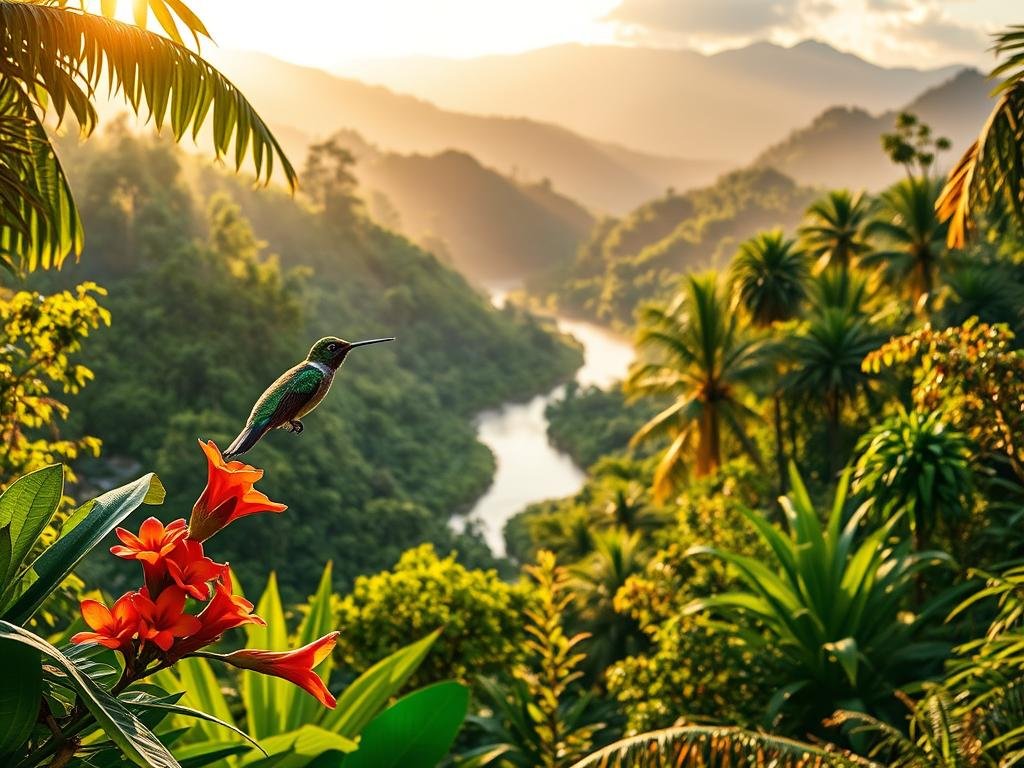
These tiny wonders belong to the Trochilidae family, which includes 366 species globally. Regions like the Amazon and Atlantic Forest serve as prime habitats, where species like the Festive Coquette and White-chinned Sapphire thrive.
Hummingbirds display fascinating behaviors, from hovering flight to guarding nectar-rich flowers. Their specialized bills and vibrant plumage make them a highlight of birdwatching adventures in South America.
Key Takeaways
- Brazil hosts 81 hummingbird species, 13 of which are endemic
- They belong to the Trochilidae family with 366 species worldwide
- Key habitats include the Amazon and Atlantic Forest regions
- Unique adaptations include hovering flight and specialized nectar feeding
- Colorful species like the Brazilian Rubi and Black Jacobin attract birders
Brazil: A Birdwatcher’s Paradise
Brazil’s lush landscapes create a haven for bird enthusiasts, hosting 60% of South America’s avian diversity. Its equatorial position fosters tropical habitats where hummingbirds flourish, from rainforests to coastal wetlands.
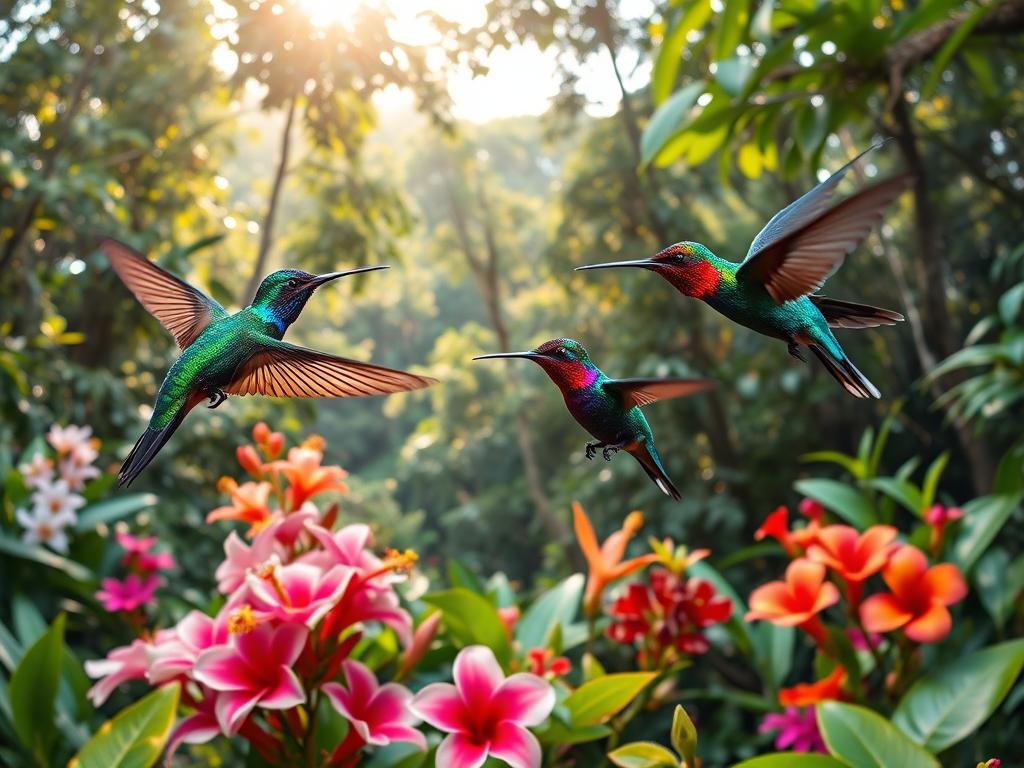
Why Brazil’s Ecosystem Attracts Hummingbirds
The country’s equatorial belt (within 10°N/S) boasts the highest hummingbird density globally. Nectar-rich flowers in the Amazon and Atlantic Forest sustain species like the Buff-bellied Hermit and Glittering-throated Emerald.
Coastal forests near Ubatuba and wetlands like the Pantanal serve as hybrid zones, attracting rare varieties. Seasonal shifts influence activity, with peak sightings in drier months.
Regions to Spot Hummingbirds in Brazil
Top hotspots include the Amazon Basin (highest diversity), Serra dos Órgãos National Park, and Santa Teresa’s Biology Museum. Local guides and operators like Nat Hab Adventures offer specialized tours for birding enthusiasts.
In Espírito Santo, the beija-flor rajado (a striated hummingbird) dazzles visitors at Quinta do Mendes. Each region offers unique sightings, making Brazil a world-class destination for hummingbird lovers.
What Types of Hummingbirds are Found in Brazil?
From crimson-plumed endemics to rare forest dwellers, Brazil’s hummingbirds captivate birders. These tiny avians thrive in habitats from coastal wetlands to mountain forests, offering endless discovery.
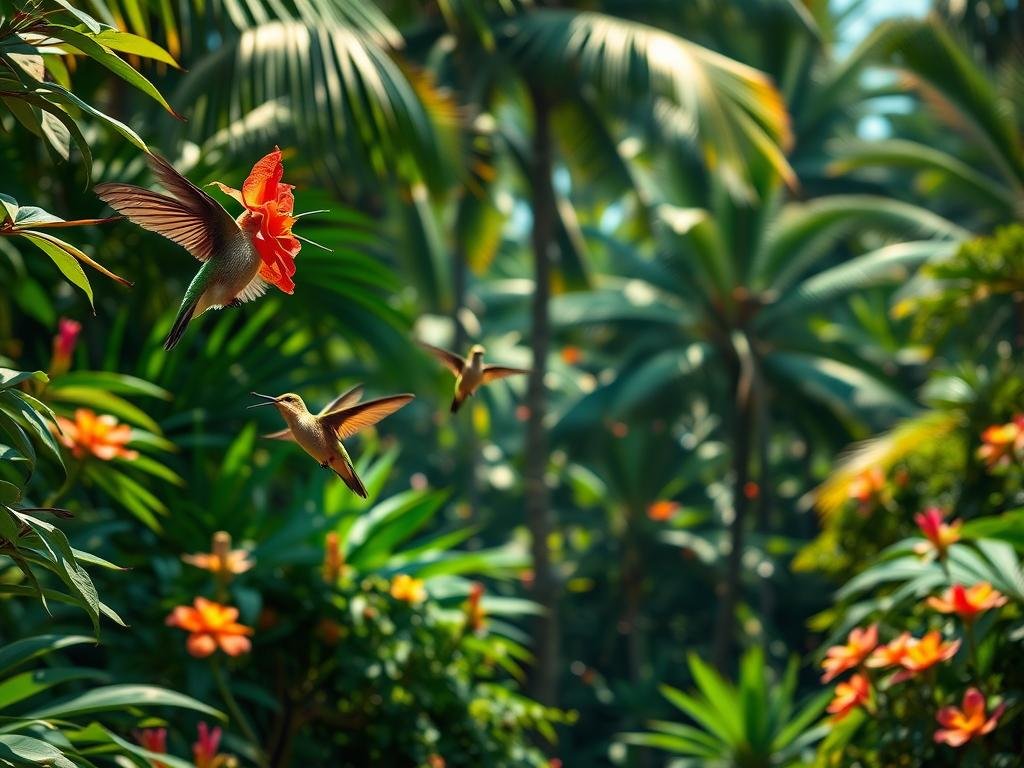
Endemic Species Unique to Brazil
Thirteen hummingbird species exist solely in Brazil’s ecosystems. The Brazilian Ruby (Heliodoxa rubricauda) stands out with its crimson plumage, often spotted in Serra dos Órgãos National Park.
Another endemic, the Hooded Visorbearer, inhabits high-altitude grasslands. Its iridescent green hood shimmers in sunlight, a sight treasured by photographers.
| Endemic Species | Key Features | Habitat |
| Brazilian Ruby | Crimson tail, 9 cm length | Atlantic Forest |
| Hooded Visorbearer | Iridescent hood, curved bill | Campos do Jordão |
Colorful and Common Varieties
The White-chinned Sapphire dazzles with turquoise throat feathers, often visiting urban feeders. Equally striking, the Festive Coquette flaunts an orange crest and emerald gorget during mating displays.
These common species adapt well to gardens, making them favorites among birdwatchers. Their frequent sightings help scientists track population health.
Rare and Elusive Species
Brazil shelters critically endangered hummingbirds like the Diamantina Sabrewing, known from just a few mountain ranges. Habitat loss threatens its survival.
The Frilled Coquette, Brazil’s smallest species, hides in Atlantic Forest reserves. Males fan black-and-white cheek feathers to attract mates.
For a complete list of 290 South American hummingbirds, download the PDF checklist, including Brazil’s 81 species.
Fascinating Behaviors of Brazilian Hummingbirds
Brazilian hummingbirds showcase extraordinary behaviors that captivate scientists and bird lovers alike. Their rapid wingbeats and vibrant displays reveal evolutionary marvels unique to the Trochilidae family.
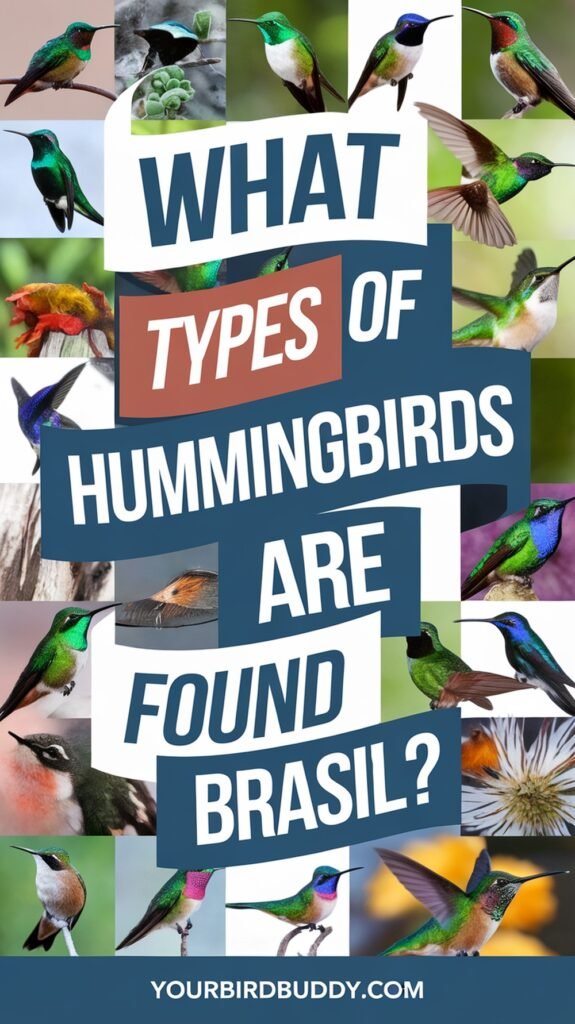
Flight Patterns and Feeding Habits
These tiny avians defy gravity, hovering mid-air with wingbeats reaching 100 flaps per second. Specialized shoulder joints allow backward flight—a rarity in the bird world.
Nectar fuels their high-energy lifestyle, but they also hunt insects for protein. During lean days, they enter torpor, slashing metabolism by 95% to survive.
Mating Rituals and Territorial Displays
Males perform dramatic U-shaped dives to impress mates. Species like the Swallow-tailed Hummingbird gather in leks, competing for female attention.
At feeders or flower patches, territorial battles erupt. Iridescent throat feathers flare as they chase rivals, ensuring exclusive access to food.
Some temperate species migrate seasonally, covering thousands of miles. Their resilience makes them a highlight for birdwatching enthusiasts worldwide.
Conclusion
With 81 dazzling species, Brazil stands as a global hotspot for hummingbird enthusiasts. The Atlantic Forest alone shelters 16 varieties, rivaling other rich habitats like the Cerrado.
Plan visits between August and October for optimal sightings. Dry months lure hummingbirds to feeders and flowering trees.
Support conservation by choosing WWF-aligned tours. Avoid playback calls and respect nesting areas to protect these fragile birds.
Ready to explore? Download the complete checklist and start your birding adventure.
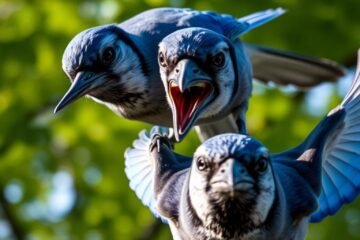
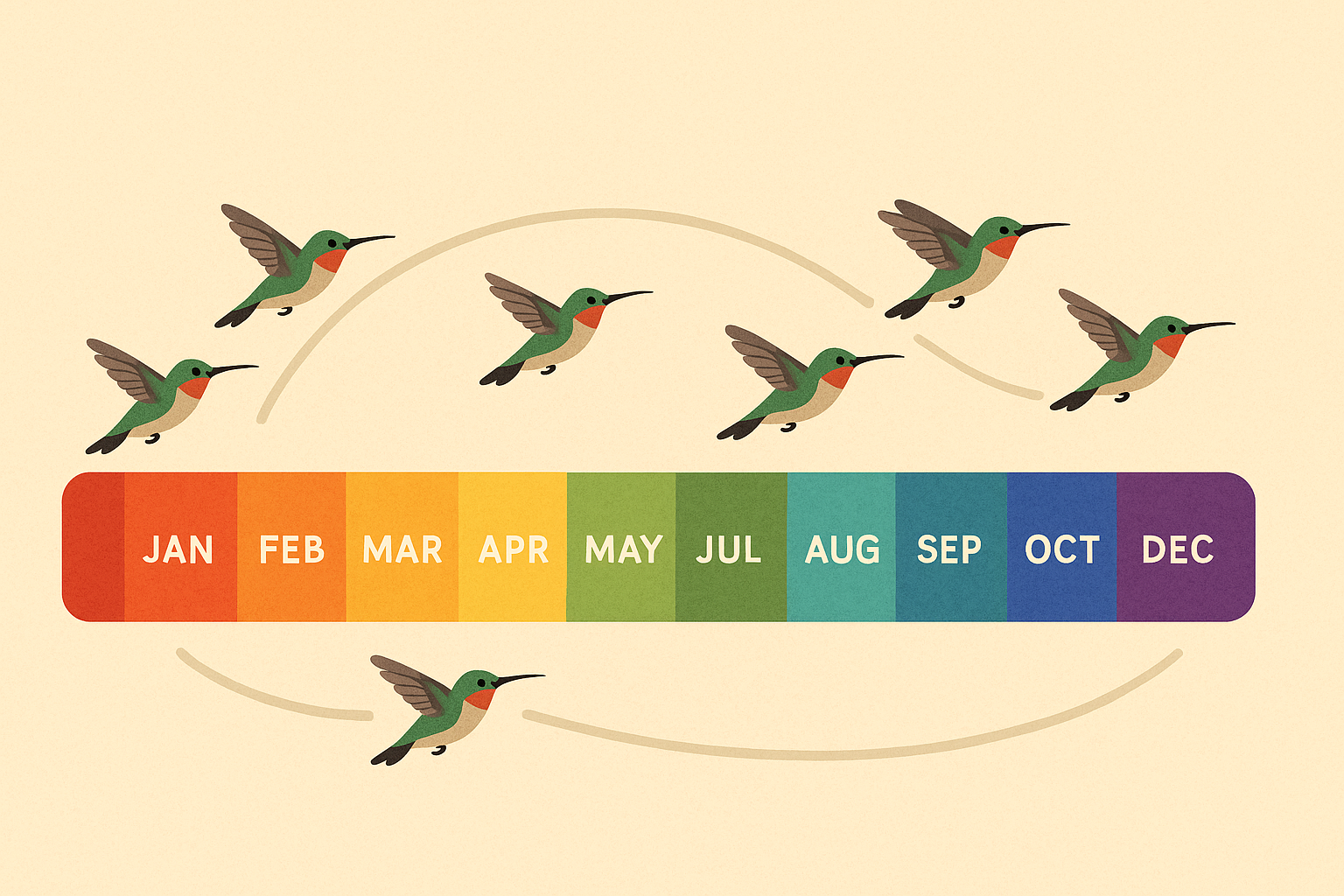
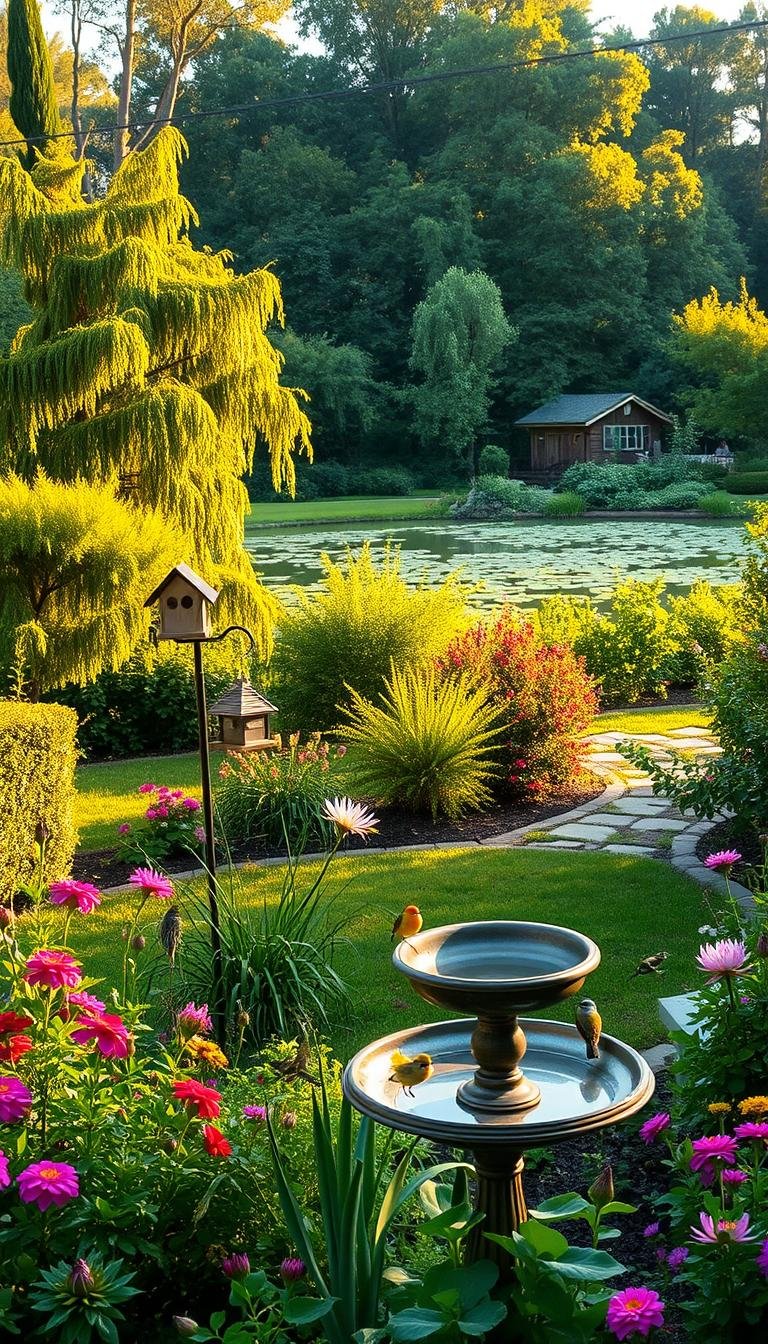
0 Comments